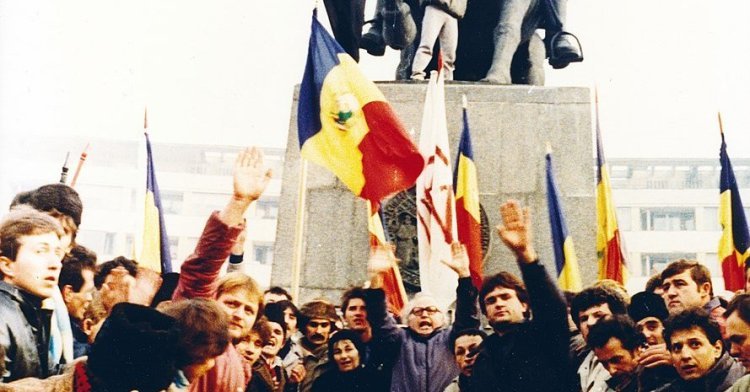On December 25th, people worldwide, including both Christians and non-Christians, come together to celebrate Christmas. This festive occasion is marked by various reasons, ranging from commemorating the birth and death of Christ to enjoying delicious food, vibrant decorations, and the exchange of thoughtful gifts. However, in Romania, Christmas holds a unique historical significance as it intertwines with the country’s journey from the clutches of a dictator to the embrace of democracy. To comprehend the connection between Christmas and this dramatic historical narrative, one must delve into the times of the Second World War (1939-1945) and subsequently the Communist era (1945-1989) in Romania.
Historical Context
Romania initially gained independence by breaking away from the Ottoman Empire in 1877, officially becoming an independent state and forming the Kingdom of Romania. During the First World War (1914-1917), Romania allied with the Entente Powers, experiencing territorial expansion and increased political and economic strength. This era marked the emergence of the Greater Romania notion, characterised by territorial gains from Hungary, Austria, and then-Tsarist Russia. The country also embraced democratic principles, fostering a democratic society and political system. However, this democratic phase was short-lived. The accession of Carol II (1893-1953) to the throne posed a threat to democracy, as he sought absolute rule. Exploiting the Great Depression (1929-1939), Carol II supported fascist organisations in Romania, including the establishment of the racist and antisemitic Iron Guard. During World War II, King Carol II abdicated, leading to the rise of military general Ion Antonescu (1882-1946), who took control and dismantled the existing Iron Guard to consolidate power. Antonescu forged a close alliance with Nazi Germany, participating in the invasion of the Soviet Union (USSR) and allowing the persecution of thousands of Jewish, political rivals, Romani people and other minorities in Romania. The tide turned against Romania and Nazi Germany as they lost the war. The Iron Curtain descended, with both countries suffering casualties, economic collapse, and occupation by the Red Army of the USSR. In the typical pattern of Eastern European countries under Soviet control, the local Soviet-backed party seized power in Romania. The country became isolated from Western influence, and a complete totalitarian regime, complete with the Securitate (the secret Romanian police), was established. The Communist Party’s rule ushered in an era of terror and poverty, exacerbated by the leadership of Nicolae Ceaușescu (1918-1989), who took the helm of Romanian politics in 1965.
Pillars of Evil
Ceaușescu, occasionally adopting the nickname “Leader (Conducător)” reminiscent of Antonescu, joins the ranks of 20th-century dictators, including Joseph Stalin of the USSR (1878-1953), Pol Pot of Cambodia (1925-1998), Enver Hoxha of Albania (1908-1985), and Kim Il Sung of North Korea (1912-1994), as the Grinch in our Christmas story. Nicolae, however, did not act alone; his wife, Elena Ceaușescu (1916-1989), played an active role in their oppressive regime (the ’Grinchess’ of our story). Together, the couple transformed Romania into an exceedingly bleak place to live. Their impact was not limited to internal ruin; they harboured megalomaniacal ambitions, exemplified by the construction of the Palace of the Parliament in Bucharest—the second-largest building globally after the Pentagon. To further reflect their power, the palace was to be constructed almost-solely from Romania’s endemic materials, exacerbating the country’s depletion of natural resources. Initially, Ceaușescu enjoyed popularity by adopting an independent stance towards the USSR, leaving the Warsaw Pact, a defence pact binding Communist states. Romania became the first European Communist country to establish relations with the European Community. However, Ceaușescu adamantly rejected any liberal reforms, and utilising constantly the Securitate, he tightly controlled free speech and media. Moreover, to overcome the country’s debt, directed the export of a significant portion of the country’s agricultural and industrial production, resulting in shortages of food, energy, medicines, and other essentials, making everyday life into a struggle for survival for his own people. Lastly, Ceaușescu fostered a North Korean-style personality cult and appointed his wife, Elena Ceaușescu, and family members to high government positions. A staunch advocate of Communist systemisation, he ordered the complete overhaul of Bucharest, the capital city, destroying over one-fifth of the city, including historical buildings, monuments, and churches in the process.
Crăciun fericit! (“Merry Christmas!” in Romanian)
On December 21st, the unravelling of the end for the Communist leader and his wife began. In Timisoara, a few days before, a rebellion was quelled using live fire, sparking a chain reaction that reached Bucharest. During Ceaușescu’s final speech (1:20) to the people, the precise moment when chaos erupted within the crowd can be observed. Live broadcasting ceased promptly as the situation in the audience escalated. Subsequently, the crowd turned into a riot, leading to a nationwide protest against the tyrannical couple. Attempting a dramatic escape reminiscent of “Bonnie & Clyde,” they were eventually captured by coercing a helicopter pilot at gunpoint, who feigned an engine failure, resulting in their arrest. Within four days, they were tried, facing numerous charges, including “genocide” against the Romanian people. On December 25th, their execution marked the culmination of the Communist era in Romania and the expulsion of the Grinches from our tale.
Romanian history, marked by nationalistic awakenings, democratic processes, and periods of autocratic rule, has experienced 34 years of liberation since the demise of its last tyrant. The shadow cast over Romania by the “Genius of the Carpathians” and his equally malevolent wife was finally banished, allowing Christmas to be celebrated as it should, with hopes for a democratic future grounded in Western values. In 2007, Romania officially became a Member State of the European Union, benefiting from assistance in areas such as improved public administration, reduced corruption, alleviated poverty, and becoming the second-largest economy in Eastern Europe. Romania serves as a successful case study illustrating the advantages of transitioning from a tyrannical reality to a democratic, Western values-based existence. In our current times, marked by the resurgence of Euroscepticism, racism, and fascist ideologies, it becomes crucial to reflect on and understand the historical struggles where people fought for the freedoms, we often take for granted. As we approach the coming year, let us carry the lessons of the past, embracing the resolutions born out of those struggles. May these reflections guide us towards a future that upholds the values of democracy, equality, and respect for human rights.


Follow the comments: |
|
